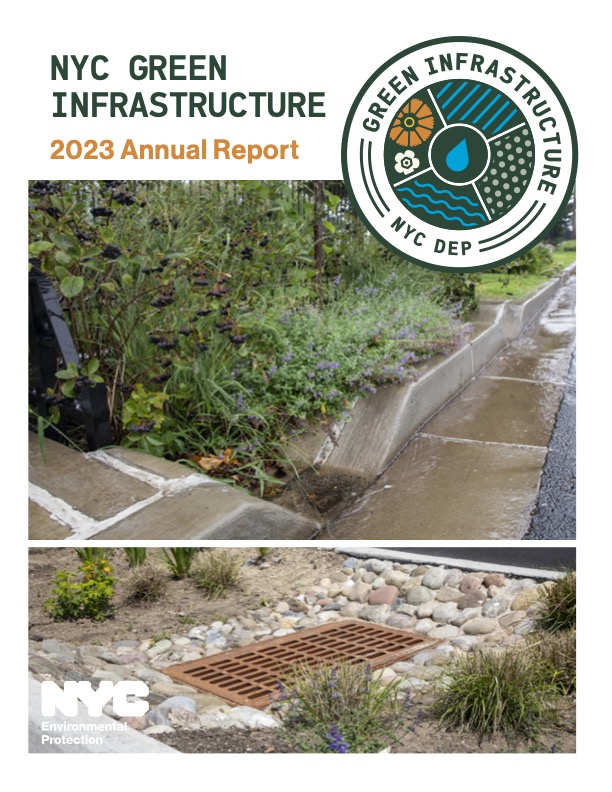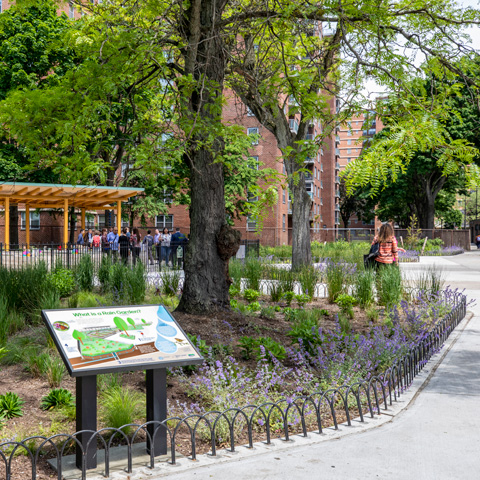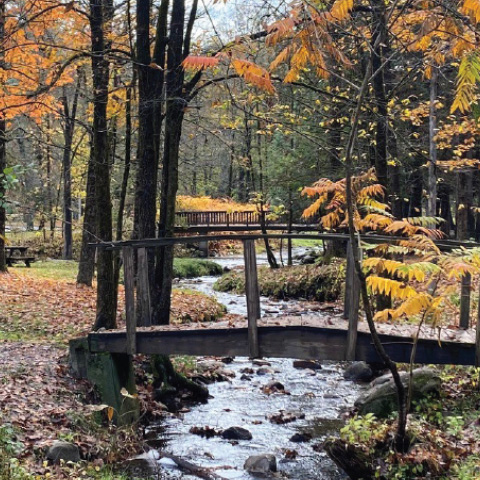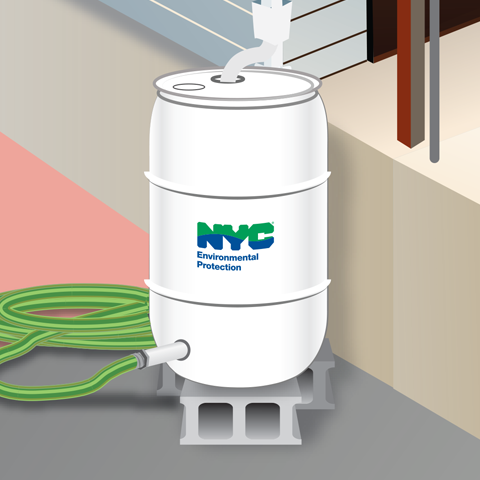
 Environmental Protection311
Environmental Protection311 Search all NYC.gov websites
Search all NYC.gov websites
Green Infrastructure
Green infrastructure collects stormwater from streets, sidewalks, and other hard surfaces before it can enter the sewer system or cause local flooding. By reducing the amount of stormwater that flows into the Sewer System, green infrastructure helps prevent Sewer Overflows and improves the health of local waterways. We have successfully built thousands of green infrastructure installations across New York City.
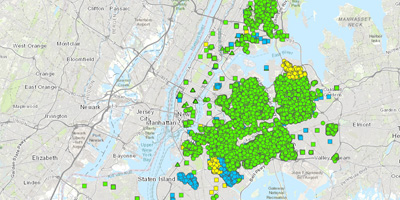
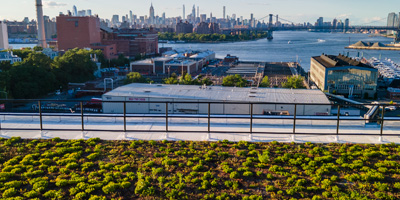
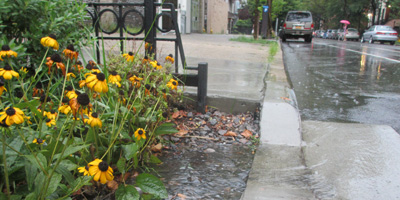
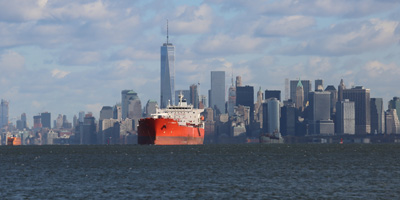
Green Infrastructure Reports and Plans
Green Infrastructure Annual Report
To view our Green Infrastructure reports from previous years, visit our Document Portal and search for “Green Infrastructure.”
CSO Consent Order Submittals
2016 Green Infrastructure Performance Metrics Report
Green Infrastructure Standards and Specifications
DEP has developed design guidelines, standards and specifications for:
- green infrastructure built in city streets and sidewalks (right-of-way (ROW))
- green infrastructure built within the property line of a City-owned site such as parklands and schools (public on-site)
These design standards and procedures are used by engineers, architects, landscape architects, and other city agencies to streamline the development of contract plans and drawings, and reduce the timeline and costs associated with design and approval processes. For access to previous versions of the Standards for Green Infrastructure, please contact gioutreach@dep.nyc.gov.
Right-of-Way Design Standards
- Download the Standards for Green Infrastructure
- Download the Survey Procedure
- Download the Geotechnical Investigation Procedure and Appendices
- Download the Green Infrastructure Siting Criteria
Right-of-Way Standard Specifications
- Download NYC DEP Standard Green Infrastructure Specifications from the NYC Department of Design and Construction website
Public On-site Retrofit Design Standards
- Download the NYC Green Infrastructure On-site Design Manual—Version 2
- Download the Appendices (A–J) for the NYC Green Infrastructure On-site Design Manual
- Download Appendix D: Stormwater Calculation Table for On-site Green Infrastructure Practices (XLSX)
- Download Appendix I: Department of Parks and Recreation Tree Inventory Spreadsheet Template (XLSX)
Green Infrastructure Protections
Proper protection of Green Infrastructure is crucial as contractors shall be liable for any damage to assets due to construction activities. Please notify giutility@dep.nyc.gov at least 48 hours prior to commencing construction work near Green Infrastructure.
Impervious Area Map Layer
This DEP-developed Geographic Information System (GIS) land cover map layer displays citywide pervious areas (surfaces that allow water to pass through to the underlying soil, like permeable pavers or rain gardens) and impervious areas (surfaces that do not allow water to pass through, like asphalt or concrete) at the parcel level. It supports ongoing citywide planning efforts and programs related to stormwater, resiliency, and other initiatives.
Cloudburst Management
A way of absorbing, storing, & transferring stormwater to minimize flooding from heavy rain events.
Unified Stormwater Rule
A comprehensive, citywide stormwater management policy for new & redevelopment properties in NYC.
Tibbetts Brook Daylighting Project
We’re using green infrastructure to restore a stream that’s been covered for more than a century.
Rain Barrel Giveaway Program
We partner with elected officials to organize distribution events throughout New York City.



